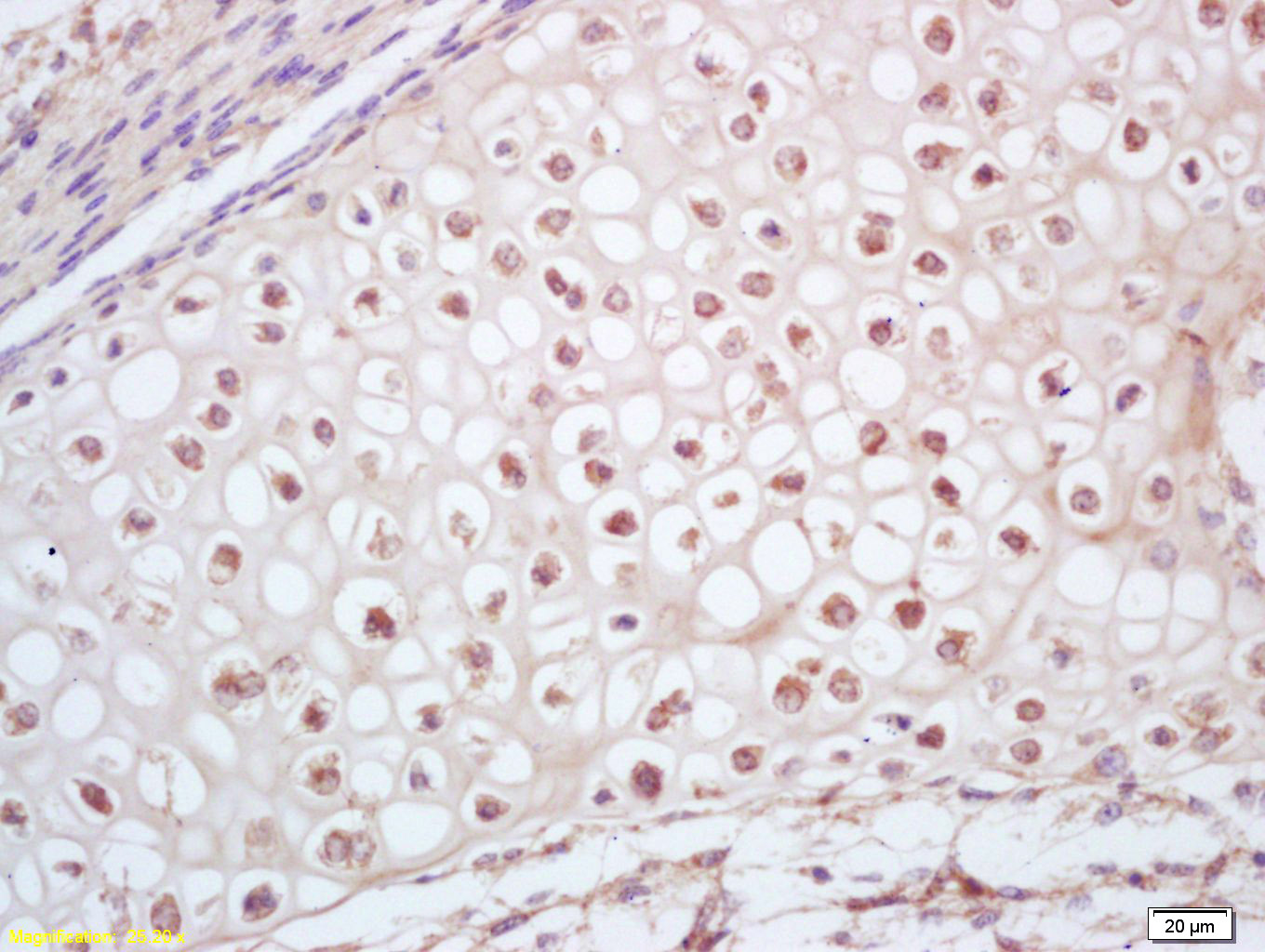
Rabbit Anti-CDC2L1 antibody
CDC related protein kinase p58; CD11B_HUMAN; CDC2L2; Cdk11; Cell Division Cycle 2 like 1; Cyclin Dependent Kinase 11; galactosyltransferase associated protein kinase; p58 CLK1; p58GTA Protein Kinase; PITSLRE; PITSLRE serine/threonine protein kinase CDC2L1
View History [Clear]
Details
Product Name CDC2L1 Chinese Name 细胞分裂周期蛋白2亚型1抗体 Alias CDC related protein kinase p58; CD11B_HUMAN; CDC2L2; Cdk11; Cell Division Cycle 2 like 1; Cyclin Dependent Kinase 11; galactosyltransferase associated protein kinase; p58 CLK1; p58GTA Protein Kinase; PITSLRE; PITSLRE serine/threonine protein kinase CDC2L1; PITSLREA; PK58; Protein Kinase beta. literatures Research Area Tumour Cell biology immunology Chromatin and nuclear signals Cyclin Immunogen Species Rabbit Clonality Polyclonal React Species Mouse, (predicted: Human, Rat, Dog, Pig, Cow, Horse, Rabbit, ) Applications WB=1:500-2000 ELISA=1:5000-10000 IHC-P=1:100-500 IHC-F=1:100-500 IF=1:100-500 (Paraffin sections need antigen repair)
not yet tested in other applications.
optimal dilutions/concentrations should be determined by the end user.Theoretical molecular weight 93kDa Cellular localization The nucleus cytoplasmic Form Liquid Concentration 1mg/ml immunogen KLH conjugated synthetic peptide derived from human CDC2L1: 401-500/795 Lsotype IgG Purification affinity purified by Protein A Buffer Solution 0.01M TBS(pH7.4) with 1% BSA, 0.03% Proclin300 and 50% Glycerol. Storage Shipped at 4℃. Store at -20 °C for one year. Avoid repeated freeze/thaw cycles. Attention This product as supplied is intended for research use only, not for use in human, therapeutic or diagnostic applications. PubMed PubMed Product Detail CDC2L1 is a member of the p34Cdc2 protein kinase family. p34Cdc2 kinase family members are known to be essential for eukaryotic cell cycle control. This gene is in close proximity to CDC2L2, a nearly identical gene in the same chromosomal region. The gene loci including this gene, CDC2L2, as well as metalloprotease MMP21/22, consist of two identical, tandemly linked genomic regions which are thought to be a part of the larger region that has been duplicated. This gene and CDC2L2 were shown to be deleted or altered frequently in neuroblastoma with amplified MYCN genes. The protein kinase encoded by this gene could be cleaved by caspases and was demonstrated to play roles in cell apoptosis. Several alternatively spliced variants of this gene have been reported.
Function:
Appears to play multiple roles in cell cycle progression, cytokinesis and apoptosis. The p110 isoforms have been suggested to be involved in pre-mRNA splicing, potentially by phosphorylating the splicing protein SFRS7. The p58 isoform may act as a negative regulator of normal cell cycle progression.
Subunit:
The cleaved p110 isoform, p110C, binds to the serine/threonine kinase PAK1 and RANBP9. p110C interacts with RNPS1. The p58 isoform but not the p110 isoforms or p110C interacts with CCND3. The p110 isoforms are found in large molecular weight complexes containing CCNL1 and SFRS7.
Subcellular Location:
Cytoplasm. Nucleus.
Tissue Specificity:
Expressed ubiquitously. Some evidence of isoform-specific tissue distribution.
Post-translational modifications:
During apoptosis, induced by Fas or tumor necrosis factor, specific CKD11 p110 isoforms are cleaved by caspases to produce a protein (p110C) that contains the C-terminal kinase domain of the CDK11 proteins.
Phosphorylation at Ser-115 creates a binding site for 14-3-3 proteins. p110C can be autophosphorylated.
Similarity:
Belongs to the protein kinase superfamily. CMGC Ser/Thr protein kinase family. CDC2/CDKX subfamily.
Contains 1 protein kinase domain.
SWISS:
P21127
Gene ID:
984
Database links:Entrez Gene: 984 Human
Entrez Gene: 12537 Mouse
Omim: 176873 Human
SwissProt: P21127 Human
SwissProt: P24788 Mouse
Unigene: 192316 Human
Product Picture
Antigen retrieval: citrate buffer ( 0.01M, pH 6.0 ), Boiling bathing for 15min; Block endogenous peroxidase by 3% Hydrogen peroxide for 30min; Blocking buffer (normal goat serum,C-0005) at 37℃ for 20 min;
Incubation: Anti-CDC2L1 Polyclonal Antibody, Unconjugated(SL5746R) 1:200, overnight at 4°C, followed by conjugation to the secondary antibody(SP-0023) and DAB(C-0010) staining
References (0)
No References
Bought notes(bought amounts latest0)
No one bought this product
User Comment(Total0User Comment Num)
- No comment



 +86 571 56623320
+86 571 56623320
 +86 18668110335
+86 18668110335

